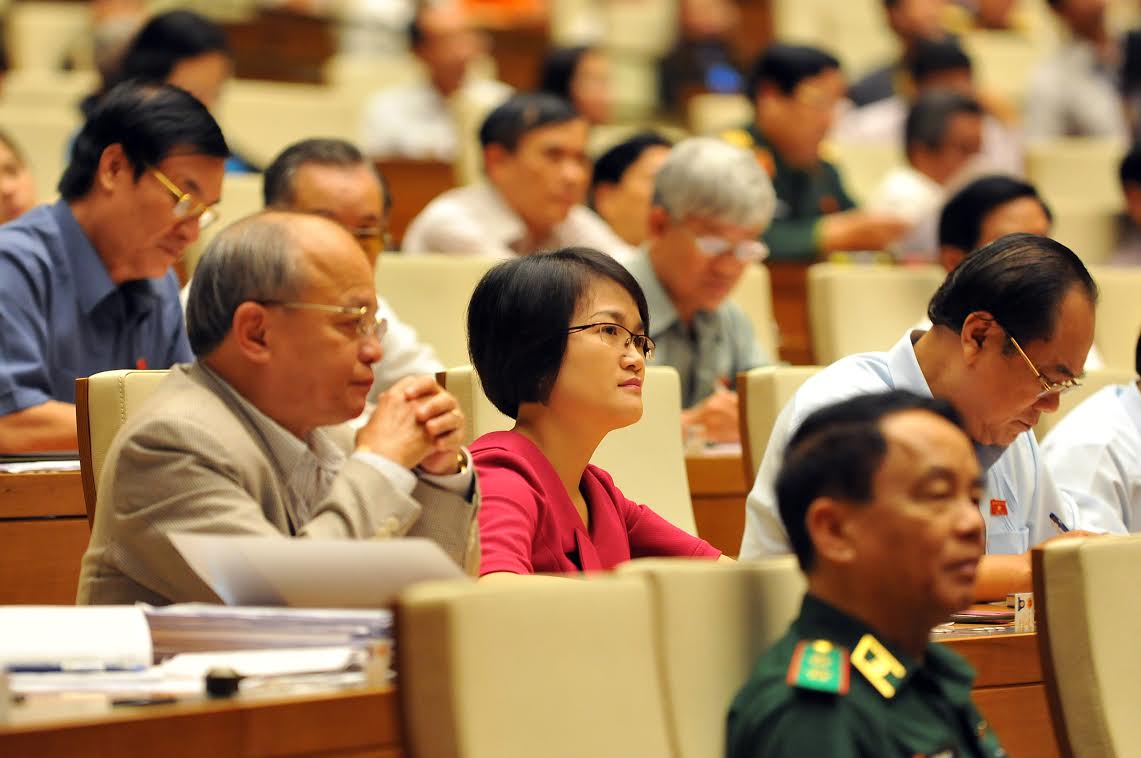Within the scope of this article, the author delves into the property regime of spouses as stipulated by Marriage and Family Law, with a particular focus on common property and separate property of spouses during the marriage period, which are delineated in detail in the Law on Marriage and Family 2014 in Vietnam.
1. Concept
Law on Marriage and Family 2014 in Vietnam stipulates: Joint property of spouses includes property created by the spouses, income from labor, production and business activities, fruits, and proceeds arising from separate property and other lawful incomes during the marriage period; property that the spouses inherit jointly, are jointly given as a gift, and other property that the spouses agree to be joint property; the land use rights acquired by the spouses after marriage is joint property, except for the case where the spouse inherits separately, is given separately, or acquires through transactions by separate property; Here, the author will analyze in detail the property that is other lawful incomes of the spouse during the marriage period, which may include bonuses, lottery winnings, allowances excluding allowances and incentives received under the legal provisions on incentives for people with merit to the revolution, other property rights attached to the person of the spouse. Property that the spouse acquires ownership rights under the provisions of the Civil Code regarding ownerless objects, concealed objects, sunken objects, lost or forgotten objects, lost livestock, poultry, aquatic animals, and other lawful incomes according to the law; Fruits arising from separate property of the spouse are considered natural property that the spouse obtains from his/her own separate property; Proceeds arising from separate property of the spouse are the benefits that the spouse gains from exploiting his/her own separate property.
Article 34 of the Law on Marriage and Family 2014 in Vietnam stipulates: In the case of joint property of spouses that the law stipulates must be registered for ownership or use rights, the certificates of ownership and use rights must bear the names of both spouses, unless the spouses have an agreement otherwise. Meanwhile, Article 98 of the Land Law 2013 prescribes the principle of issuance of certificates: Land use rights, house ownership rights, and other assets attached to land as joint property of spouses shall bear the names of both spouses in the certificates of land use rights, house ownership rights, and other assets attached to land, except when the spouses agree to register the name of one person; for example, in Circular No. 15/2014/TT-BCA dated April 04, 2014, of the Ministry of Public Security on vehicle registration, Article 25 stipulates: If the vehicle is joint property of the spouses, the owner voluntarily declares it as joint property, and the full names and signatures of both spouses must be recorded in the vehicle registration document.
Thus, for valuable property for which the law requires registration of ownership or use rights, the certificate of ownership or use shall bear both spouses' names, and both spouses' consent is required when exercising rights over such joint property.
Regarding separate property of the spouse, Article 43 of the Law on Marriage and Family 2014 in Vietnam stipulates: Separate property of the spouse includes property that each person has before marriage, property inherited separately, given separately during marriage, property divided separately by agreement of the spouses dividing a part or the entire joint property, property serving essential needs of the spouses, and other property according to the provisions of law belongs to the separate ownership of the spouse. Thus, separate property is formed at two points in time, before or during the marriage period, and can be identified by the time these properties were established and certified for ownership and use.
2. Basis for Determining and Dividing Assets of Husband and Wife
First, regarding the basis for determining and dividing the common property of husband and wife.
One is the basis for determining the common property of husband and wife.
Article 32 of the 2013 Constitution stipulates: "Everyone has the right to own lawful income, savings, housing, living materials, production materials, and contributed capital in enterprises or other economic organizations." When citizens have the right to own assets, those assets are recognized as their lawful property. Husband and wife are individuals and naturally have these rights. When there is the right to own property, it is possible to establish the accumulation of assets, whether common or private property of individuals in society.
To institutionalize the provisions of the 2013 Constitution, the 2015 Civil Code, Article 213 stipulates the common ownership of husband and wife:
"1. Common ownership of husband and wife is united common ownership that can be divided.
2. Husband and wife together establish and develop the common property; have equal rights in the possession, use, and disposal of the common property.
3. Husband and wife may agree or authorize each other to possess, use, or dispose of the common property.
4. The common property of husband and wife can be divided according to an agreement or by a court decision.
5. In cases where husband and wife choose the property regime according to an agreement as prescribed by the law on marriage and family, the common property of husband and wife shall be applied according to this property regime."
Article 33 of the 2014 Law on Marriage and Family specifically stipulates the common property regime of husband and wife: "The common property of husband and wife includes property created by either party, income from labor, production and business activities, yields, and profits arising from separate property, and other lawful incomes during the marriage period, except for the cases stipulated in Clause 1, Article 40 of this Law; property inherited by both or given to both and other property that husband and wife agreed to be common property.
The right to use land acquired by husband and wife after marriage is common property, except for cases where one spouse inherits separately, is given separately, or acquires it through transactions with separate property.
2. The common property of husband and wife belongs to united common ownership and is used to ensure family needs and to perform the common obligations of husband and wife.
3. In the absence of evidence to prove that disputed property is the separate property of each party, that property is considered common property."
Civil law is a branch of law in the legal system, comprising the aggregate of legal norms that adjust civil relations in general, property relations of a commodity-money nature in particular, and other personal relations based on the equality and independence of parties involved in those relations. Both the Civil Code and the Law on Marriage and Family have the same object of adjustment, which is the group of personal and property relations within marital and family relations. The 2015 Civil Code contains several specific regulations on ownership, possession, disposal, and inheritance of property. These regulations aim to clarify the cases for establishing the common property of husband and wife.
Second, the basis for dividing the common property of husband and wife.
Article 38 of the 2014 Law on Marriage and Family stipulates: "During the marriage period, husband and wife have the right to agree to divide part or all of the common property, except for the case stipulated in Article 42 of this Law; if they cannot agree, they have the right to request the court to resolve it. In cases where husband and wife request it, the court will resolve the division of common property according to the provisions of Article 59 of this Law." Thus, the division of the common property of husband and wife can be resolved by their agreement or through the court. Additionally, the agreement on the division of common property must be made in writing and notarized according to the law or at the request of the couple.
In Circular No. 01/2016/TTLT-TANDTC-VKSNDTC-BTP dated January 6, 2016, of the Supreme People’s Court, the Supreme People’s Procuracy, and the Ministry of Justice guiding the implementation of several provisions of the 2014 Law on Marriage and Family, it is stipulated:
(1) When divorcing, the husband and wife have the right to mutually agree on all issues, including asset division. If they cannot agree and there is a request, the court must consider and decide on applying the property regime of husband and wife according to the agreement or by law, depending on the specific case the court handles. If there is no written agreement on the property regime of husband and wife or the written agreement is not entirely invalidated by the court, the contents of the agreement shall be applied to divide the property of the husband and wife upon divorce. For undecided or unclear agreements or those invalidated, the corresponding provisions in Clauses 2, 3, 4, and 5 of Article 59, and Articles 60, 61, 62, 63, and 64 of the 2014 Law on Marriage and Family shall be applied to divide the property of husband and wife upon divorce.
(2) When resolving a divorce, upon request to declare the property agreement of husband and wife invalid, the court shall resolve this simultaneously with the request for asset division upon divorce.
(3) When dividing the common property of husband and wife upon divorce, the court must determine whether the husband and wife have property rights and obligations with a third party to involve the third party as a party with property rights and obligations. If they request a resolution, the court must resolve the division of common property with the involvement of the third party. If the third party has no requests, the court shall guide them to resolve the matter through another lawsuit.
(4) In case the property regime of husband and wife is applied by law to divide property upon divorce, the common property of husband and wife shall generally be divided equally, considering the following elements: (i) “Family and husband, wife’s circumstances” concerning legal capacity, health, assets, and the ability to earn income post-divorce. The disadvantaged party post-divorce receives a larger share or is prioritized with types of property that ensure the stability and continuity of their lives, provided this does not disadvantage the family and the spouse; (ii) “Contribution of each spouse to the formation, maintenance, and development of the common property,” including contributions of private property, income, household work, and labor to the creation, maintenance, and development of common property. A wife or husband caring for children and family while not working is considered labor with an income equivalent to that of the working spouse. The greater contributing party receives more; (iii) “Protection of legitimate interests in production, business, and employment continuation” ensures that dividing the common property does not impair the capacity to generate future income from professional activity, business, or production. The party operating in these areas must compensate the other for the difference in asset value received. This protection must not undermine the minimum living conditions of the spouse and minor children or adult children without legal capacity; (iiii) “Fault of each party in violating rights and obligations of the spouses” refers to the fault leading to divorce due to violations in personal or property-related spouse obligations.
Second, regarding the basis for determining the separate property of husband and wife
Comparing the 2000 Law on Marriage and Family to current laws:
First, the 2014 Law on Marriage and Family disregards the basis of "personal belongings and apparel" in determining the separate property of husband and wife. This change addresses inadequacies in the application of this provision. Under the 2000 Law, any personal belongings and apparel were considered private property without any limitations on their value or criteria distinguishing which items fall in this category. Hence, whoever (husband or wife) managed or used these items could claim them as separate property. This provision inadvertently allowed spouses to unlawfully convert common property into private property, thus disadvantaging the other spouse.
Additionally, due to the traditional Vietnamese culture of gifting jewelry during wedding ceremonies and using jewelry for financial savings, jewelry should be recognized as accumulated wealth of the married couple during the marriage, embodying "monetary" attributes as a method of saving common family assets. Therefore, the removal of this basis in the 2014 Law on Marriage and Family is appropriate and considered progress in legal adjustment.
Second, the 2014 Law on Marriage and Family clearly identifies assets formed from the separate property of husband and wife as their separate assets during the marriage.
Previously, the old Law on Marriage and Family (2000) outlined criteria for both common and separate property of husband and wife. Though relatively clear in application, disputes over "ambiguous" assets persisted, as they were not addressed under Articles 27 and 32 of the 2000 Law. The 2014 Law resolves this by explicitly identifying separate assets. This clarification is a significant advancement, ensuring individual property rights and providing a solid legal foundation for application.
Third, the 2014 Law on Marriage and Family outlines "assets serving essential family needs" as separate property of husband and wife. This provision recognizes their characteristics and purposes. Ensuring individual freedom and meeting urgent daily needs is crucial. However, defining "essential" can vary based on individual or family living standards. For instance, items like pots, plates, shoes, clothes may be essentials for some, while others might consider phones, laptops, cars, or refrigerators essential. The law's detailed provisions grant judicial discretion to courts in resolving disputes based on specific familial circumstances.
Fourth, the separate property of husband and wife includes assets deemed separate by law. While seemingly speculative, this criterion is critical in practical application—a foundation not evident in the 2000 Law. By allowing references to other legal documents, specific asset types, especially those formed during marriage, are clearly identified. For example, Resolution No. 02/2004/NQ-HDTP TANDTC dated August 10, 2004, by the Judicial Council of the Supreme People’s Court identifies assets received by revolutionarily contributing individuals during marriage as separate property or guiding private asset classification based on agreed property regimes.
Fifth, the 2014 Law on Marriage and Family states that assets classified as individual assets under pre-marital property agreements are separate property. This revolutionary addition to husband and wife property regimes aligns with civil law principles of agreement and autonomy. This rule accommodates modern marital and familial economic relationships, such as deliberate investment, production, and business activities for economic development, protecting individual's pre-marital assets. Therefore, regulations set forth principles, agreement validity conditions, and assign the Supreme People’s Court to further refine these conditions, balancing individual autonomy and community values within marriage.
Thus, as society evolves, relationships adjust accordingly, necessitating legal revisions to match these developments. The advent of the 2014 Law on Marriage and Family, replacing the 2000 Law, is a progressive change aligned with national development, consistent with objective laws and the 2013 Constitution—the fundamental law guiding specialized legal adjustments. The regulation of marital property (including both common and separate property during marriage) is essential, addressing practical economic and social demands, and aligning with the aspirations of citizens in a new society governed by the rule of law dedicated to the people, by the people, and for the people.
According to the Court Journal
 Article table of contents
Article table of contents










.Medium.png)
.Medium.png)
.Medium.png)
.Medium.png)
